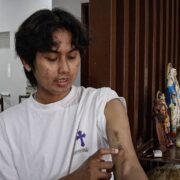Vax wastage: No end in sight?

It has been almost five years since the COVID-19 pandemic happened and close to two years since President Marcos lifted the public health emergency in the country. And yet, costly irregularities, shortcomings and missteps surrounding the Duterte era COVID-19 pandemic response continue to rear their ugly head.
Last week, the Commission on Audit (COA) said that as of September 2023, the Philippines recorded a “substantial wastage” of as much as 68.668 million COVID-19 vaccines either procured by national or local government units or donated by partner countries or foreign humanitarian organizations, highlighting “inadequate planning in vaccine procurement/acquisition, receipt, utilization and distribution.”
This was significantly higher than the 7.035 million wasted vials of COVID-19 vaccines that the COA had flagged in its annual report on the Department of Health for 2023, indicating that the problem with wasted vaccines was far more serious than initially thought.
According to the COA’s comprehensive audit conducted from May 2023 to January 2024 on the national vaccination campaign, the wasted COVID-19 vaccines accounted for as much as 27 percent of the total vaccine supply of 251.8 million COVID-19 jabs—roughly one of every three doses—exceeding the standard maximum “wastage allowance” of 25 percent.
Expiration date
Then of the vaccines that had to be disposed after going through so much trouble and allotting precious funds to secure them, 57.3 million or 83 percent of the doses had exceeded their shelf life, partly due to the fact that the Duterte administration accepted both donated and procured vaccine doses that were about to expire.
Indeed, the COA report revealed that some of the vaccines shipped in November 2021 were “already one to eight days past their labeled expiration date.”
Then other doses ended up going past their usable life because of such factors as logistical challenges, hesitation among the citizens to get inoculated in the first place, lack of proper storage facilities and poor vaccine management practices.
“The high rate of vaccine wastage, particularly for certain brands (including AstraZeneca, Janssen, Moderna and Gamaleya), is a major concern and underscores the need for improved planning, distribution, and storage strategies,” COA said in its December 2024 report.
Some allowance must of course be given to the Department of Health (DOH), the National Task Force Against COVID-19 (NTF) and other government agencies that immediately came together to immediately respond to the unprecedented crisis.
Glaring lapses
As the DOH rightly said, “the COVID-19 vaccination exercise did not have the benefit of years of planning and preparation like other routine and established vaccination programs. It was an emergency, a matter of life and death.”
The COA likewise recognized the daunting challenges that came with the COVID-19 vaccination program that contributed to the “suboptimal vaccination coverage and substantial vaccine wastage.”
These justifications, however, can only go so far, as there were glaring lapses that could have been resolved to minimize the wastage to at least meet the global standard of 25 percent.
These include stepping up the campaign to encourage more Filipinos to get vaccinated, and harmonizing the lists of vaccine recipients of the local and national governments to get a better estimate of the vaccines to be brought in.
Proper planning would have also allowed government planners to anticipate the shipment schedule so that the arriving vaccines would not be so close to their expiration date given the challenges of transporting vaccines in an archipelago and amid strict quarantines.
Unacceptable blunders
Indeed, the COA report indicated that aside from vaccines, some P152 million worth of ultra-low-temperature freezers that had been bought to support the COVID-19 vaccination program and could be repurposed to, for instance, keep cancer medicine, are now “idle or unutilized,” putting them in danger of also going to waste.
“Failure to properly repurpose these freezers could also result in failing to maximize the government funds spent and the value of donations on the said equipment,” said COA, which stressed that these 243 freezers that are still in “good condition” as of July 2024 could last up to 10 years.
These disturbing COA findings give rise to concerns over whether these examples of wastage and disregard of government resources is multiplied across the bureaucracy, across the different government offices, indeed across the entire procurement cycle.
That these unacceptable blunders go on can also be attributed to the fact that not enough accountability is exacted. Too few government officials or involved personnel face punishment for these misdeeds that come at the expense of the Filipinos. The Marcos administration should not allow such unconscionable wastage of life-saving jabs and scarce public funds to go unpunished and to be repeated on its vaccination program.

















